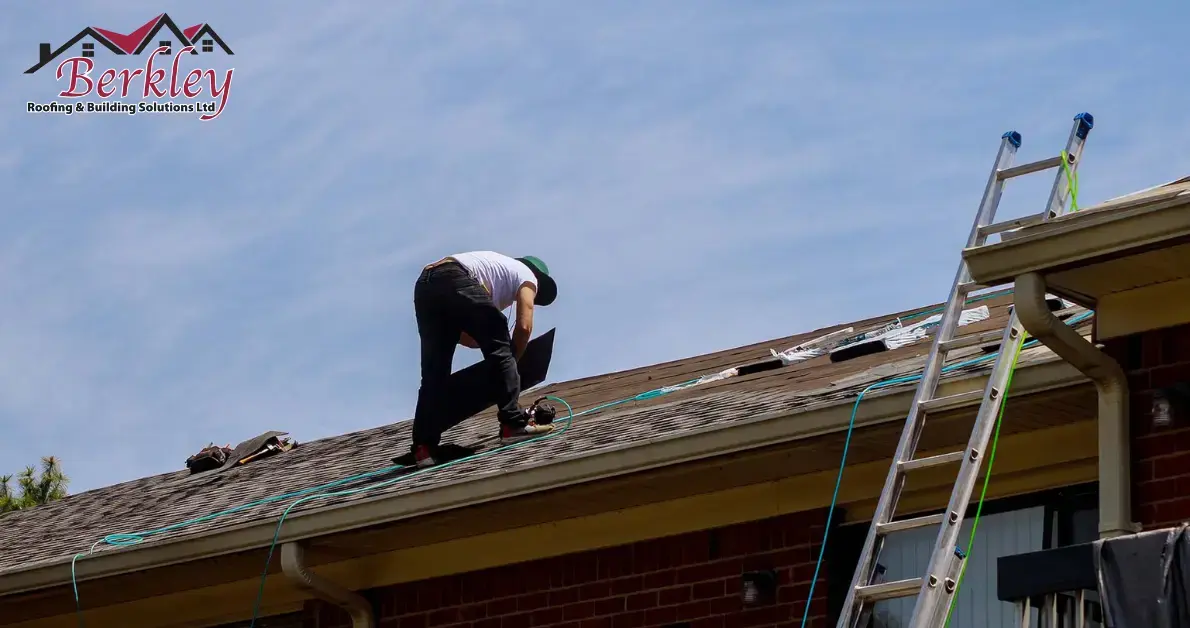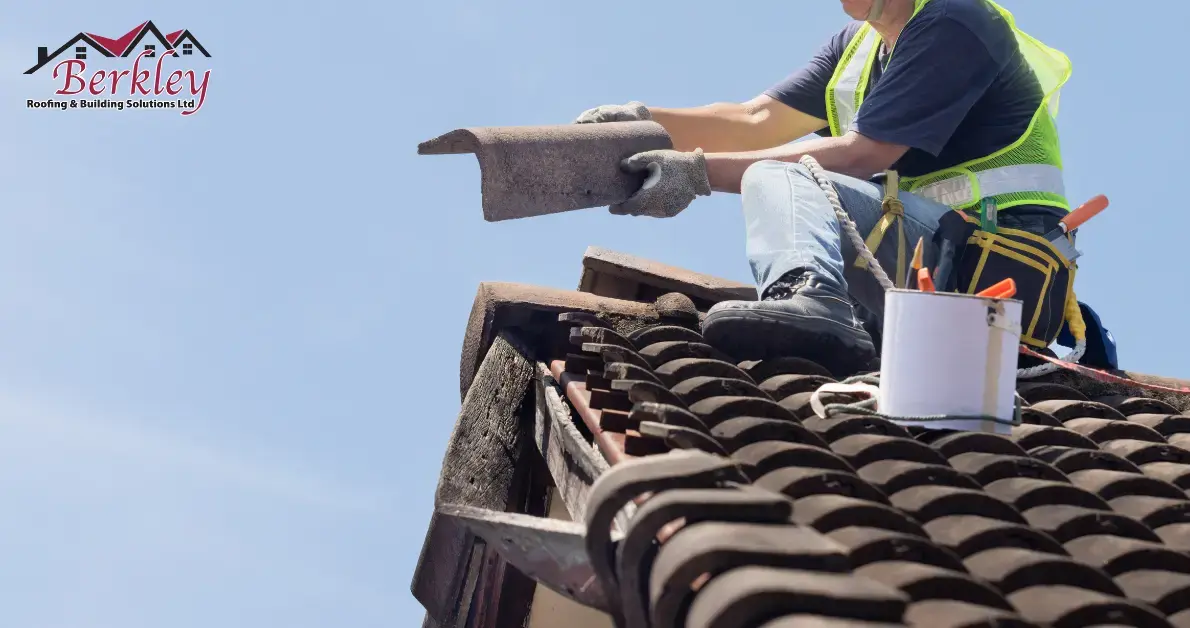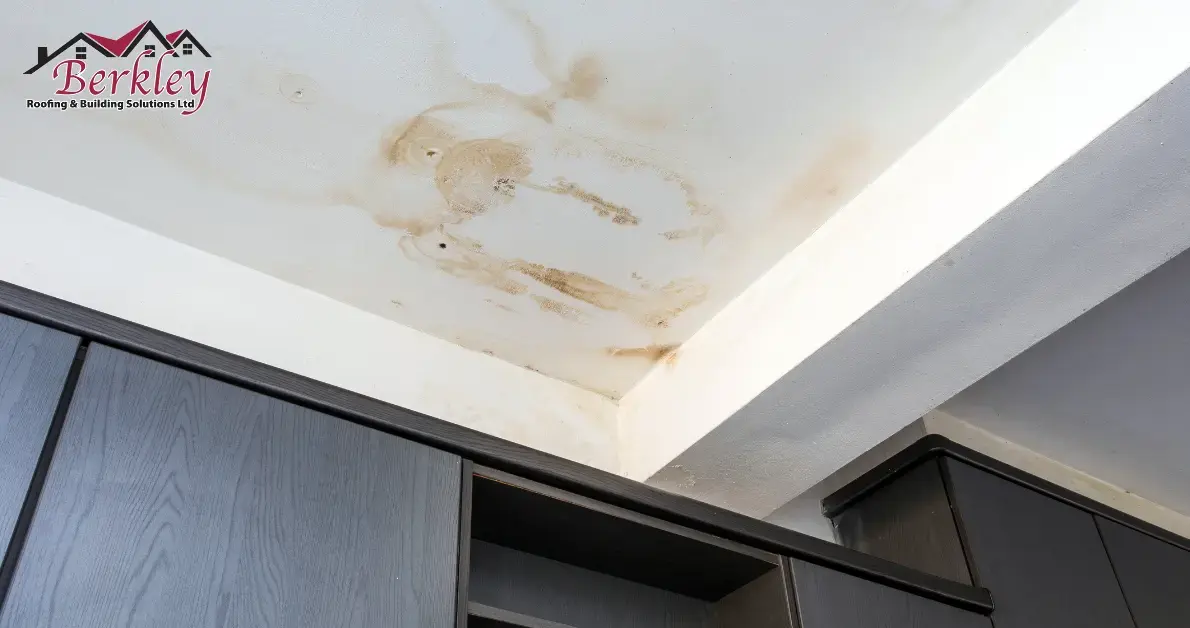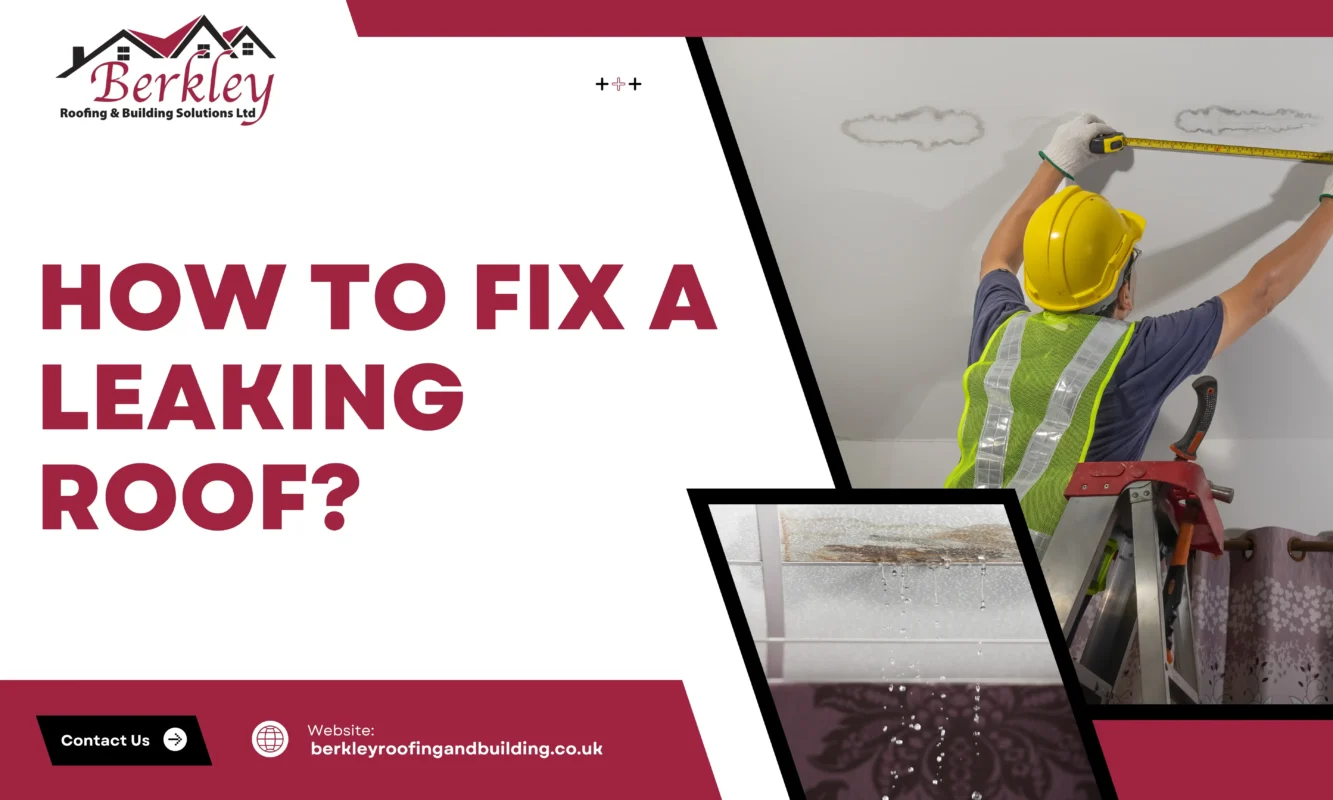A leaking roof can be a serious issue. Water can seep into your home, damaging walls, ceilings, and even electrical wiring. If left untreated, it can lead to mould growth and weaken the structure of your roof. Many homeowners feel stressed when they notice a leak, unsure whether they should fix it themselves or call a professional.
As licensed roofers, to make things easier, we have created a simple guide on how to fix a leaking roof, covering everything from finding the leak to making proper repairs.
Signs of a Roof Leak
Before fixing a leaky roof, you must confirm it is a roof leak. Here are some common signs:
- Water stains on ceilings or walls
- Dripping water inside the house, especially after rain
- Mold or mildew growth in the attic
- Missing, cracked, or curling shingles
- Damp or rotting wood in the attic
- Pooled water on a flat roof

What Causes a Leaking Roof?
1- Damaged or Missing Shingles: Shingles protect your roof from rain and weather damage. Over time, they can crack, curl, or fall off due to strong winds, hail, or ageing. When shingles are missing or damaged, water can easily seep into your home.
2- Cracked Flashing: Flashing is the metal strip that seals joints and edges on your roof, such as around chimneys, vents, and skylights. Over time, flashing can crack or rust, allowing water to seep in.
3- Clogged Gutters: Gutters help direct rainwater away from your roof. When they get clogged with leaves, dirt, or debris, water can overflow and seep into your roof, causing leaks.
4- Damaged Roof Seals: The seals around vents, skylights, and chimneys can weaken over time due to exposure to the sun, rain, and wind. When these seals crack or shrink, water can find its way inside.
5- Poorly Installed or Aging Roof: If your roof was not installed correctly or is reaching the end of its lifespan, it may start to develop leaks. Older roofs lose their protective coating, making them more vulnerable to water damage.
How to Fix a Leaking Roof?
1- Find the Exact Location of the Leak
Before you start the roof leak repair, you need to figure out the exact spot where the water is getting in. Sometimes, the leak isn’t directly above where you see the water stains inside your home. Water can travel along beams and drip down in unexpected places.
Check for water stains on your ceilings or walls. These usually give you a clue about where the leak might be. If you have an attic, grab a flashlight and go up there during the day. Look for damp spots, mould, or even daylight coming through cracks.
If you can’t find the leak, ask someone to help. One person stays inside while the other goes on the roof with a garden hose. Spray water on different sections of the roof, one at a time, and have the person inside watch for drips.
2- Gather Tools and Materials
Once you’ve found the leak, it’s time to gather what you’ll need to fix it. Depending on the type of damage, you might need:
- A hammer and roofing nails
- Roofing sealant or caulk
- Replacement shingles
- Flashing
- A tarp (for temporary fixes)
- A utility knife and pry bar for removing damaged materials
3- Replace Damaged or Missing Shingles
If the leak is due to a broken or missing shingle, carefully remove the damaged shingle using a pry bar. Gently lift it and take out the nails holding it in place. Slide a new shingle into the gap, and make sure it lines up with the rest of the roof.
Secure it with roofing nails, and apply a bit of roofing sealant over the nail heads to prevent water from seeping in. This simple fix can stop leaks and keep your roof strong.
4- Repair Leaks Around Chimneys, Skylights or Vents
Leaks often happen around areas where the roof attaches to another thing, like a chimney, a skylight, or a vent pipe. The flashing is a thin metal sheet around these areas that may be damaged or loose.
To fix this, remove any cracked or old sealant using a utility knife. This will give you a clean surface to work with. Apply a fresh layer of roofing sealant around the edges to seal any gaps.
If the flashing is damaged, then replace it with a new piece. Secure it with roofing nails and sealant to keep water out.
5- Clean the Clogged Gutters
Trust me, clogged gutters can also cause roof leaks! When gutters fill with leaves and debris, rainwater can back up and seep under your roof.
Here’s what you can do:
- Wear gloves and remove leaves, dirt, and any blockages from the gutters.
- Use a hose to flush out any remaining debris and check if the water flows properly.
- If your gutters clog often, consider installing gutter guards to keep out leaves and reduce maintenance.
6- Seal Small Cracks and Holes
If you find small holes or cracks in your roof, they’re easy to fix with roofing sealant.
First, make sure the area is completely dry. If it’s wet, the sealant won’t stick properly. Use a caulking gun or putty knife to spread the sealant over the cracks or holes. Smooth it out evenly to make sure it is fully sealed. This quick fix can stop small leaks before they turn into bigger problems.

7- Emergency Roof Leaking Repair
Sometimes, you can’t fix a leak right away, especially if bad weather is coming. Here’s what you can do to prevent more damage until you can make permanent repairs:
1- Cover the leak with a tarp: Secure a waterproof tarp over the damaged section of the roof using nails or heavy objects to keep it in place.
2- Use roofing tape: If you have a small leak, waterproof tape or quick roof patches can help you with a short-term fix.
3- Place a bucket under the leak: Inside your home, put a bucket or container under the dripping water to prevent damage to floors and furniture.
Average Roof Leak Repair Cost
The cost of roof leakage repair depends on factors such as the type of roof materials, minor or major damage, and whether you are doing it yourself or professionally. Here is a rough idea for a leaking roof repair that you can have in your mind.
| Type of Roof Leak Repair | Estimated Cost (2025 UK) |
| Minor patch repair | £100 – £250 |
| Tile or shingle replacement | £150 – £350 |
| Flashing repair | £200 – £500 |
| Full roof leak inspection + repair | £300 – £800+ |
| Chimney flashing or valley repair | £400 – £700+ |
If the leaking roof has caused internal damage like ceiling repairs or insulation replacement, those costs will add up, too.
How to Prevent Future Roof Leaks?
One of the easiest ways to prevent leaks is to check your roof for damage at least twice a year, once in the spring and again in the fall.
If you have trees near your house, be mindful of overhanging branches. Trim back branches that hang over your roof, especially if they are large or weak.
Clogged gutters are a major cause of roof leaks. Clean your gutters regularly, especially after heavy storms or in the fall when leaves pile up.
Low-quality roofs don’t last forever. Upgrade to more durable materials, like metal roofing or high-quality asphalt shingles.
Even a tiny leak can grow into a major problem, so patch cracks or replace damaged shingles as soon as you notice them.

Case Study: Roof Leakage Repair in Enfield
Recently, our Enfield roofers were called to fix a roof leak in Enfield, UK. A homeowner noticed water stains on their ceiling after heavy rain. After doing the complete, we found that missing shingles and cracked flashing around the chimney were the main causes of the leak.
Working
First, we replaced the missing shingles to confirm a proper seal. Then removed the old, cracked flashing and installed new, high-quality flashing.
Moreover, our expert team also applied a waterproof sealant around the repaired areas to prevent future leaks and also checked the gutters and cleared debris to improve water drainage.
After the repairs, the homeowner reported no further leaks, and their home was protected from future rain damage.
Conclusion
Fixing a leaky roof might feel challenging at first, whether it’s a small drip or a more serious issue. When you know how to fix it, you have the power to protect your home from costly damage. Regular inspections, proper maintenance, and timely repairs will help to extend the lifespan of your roof and keep your home safe.
If you’re not sure about fixing it, don’t hesitate to call a roofing expert. Some leaks may require advanced skills and professional help to confirm the job is done correctly.
FAQs
How to tell if your roof is leaking?
Look for water stains on ceilings, damp walls, mould, or a musty smell in your attic. A dripping sound during rain is also a strong sign.
What is the fastest way to fix a leak in the roof?
The quickest fix is to seal the leak with roofing cement or a patch as a temporary solution until proper roof leak repair is done.
How long does a roof leak repair take?
Minor repairs usually take a few hours. Depending on their complexity, major repair jobs may take a full day or more.
What’s the best material to use for a roof leak patch?
Roofing cement, flashing tape, or waterproof sealants are commonly used for temporary patches before complete repairs.

